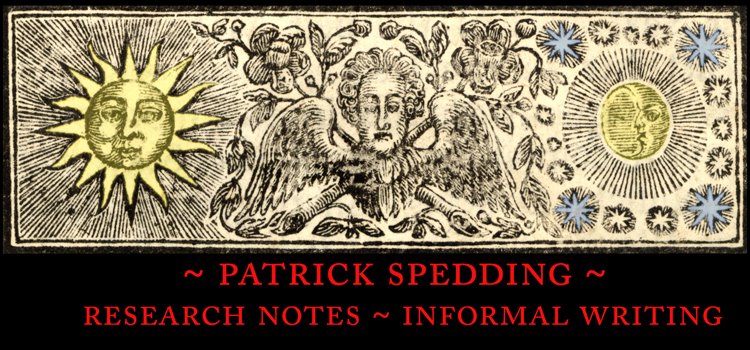Fortuitously, Dr Per Henningsgaard has also been collecting information on the teaching of bibliography in Australian institutions and Wal has allowed me to reproduce here some of what he recently sent to Per.
* * * * *
[Wallace Kirsop writes] "Despite the wishes of some of us at Monash in the early 1960s, Librarianship did not get off the ground till the middle of the 1970s. Consequently, the history of teaching bibliography and book history at Monash—bound up with Brian McMullin in particular—did not begin till later than the events I am going to note and gloss.
I saw the English Department as an outsider only till I began to teach courses for the Department in the 1980s. (I filled in for Harold Love one year in his “Methods of Scholarship” course for Fourth Year Honours, and later offered a Second/Third Year unit on “Publishing in Australia” for almost a decade till my retirement at the end of 1998.)
At the beginning, the English Department avoided falling into the neo-Leavisite morass characteristic of the University of Melbourne. In other words, it stuck to more conventional literary history, which did not exclude physical bibliography, of course. R. C. Bald was appointed to a Chair in 1965, but died before taking it up (and returning to Australia from North America). The major figure for four decades was Harold Love, but one must not forget Philip Ayres and Clive Probyn and, indeed, for relatively brief passage in the 1970s of Arthur Brown.
In the 1960s, the lead was taken by the French Department, led by my then boss Roger Laufer (whose bibliography you can no doubt download). He created the Australian Journal of French Studies, whose editorship I inherited when he returned to France at the end of 1967. An enthusiastic convert to bibliography, he planned a special emphasis on the subject in AJFS. In 1966 there was a special number on the subject in which we joined forces with Oxford colleagues, notably Richard Sayce and Giles Barber.
I was encouraged to tackle book studies in a sort of three-pronged approach: first “The bibliography of French literary history: progress, problems, projects,” AJFS 1 (1964): 325–64, then, in the special number, “Vers une collaboration de la bibliographie matérielle et de la critique textuelle,” AJFS 3 (1966): 227–51 (later expanded as Bibliographie matérielle et critique textuelle: vers une collaboration (Paris: Minard, 1970)), finally “Literary history and book trade history: the lessons of L’Apparition du livre,” AJFS 16 (1979): 488–535.
Alongside this—as the result of an enforced six-month rest with TB—I was exploring the Australian book world from a similar standpoint (reference and physical bibliography, book history). See, for example, a lecture given in Sydney in November 1966 and published as Towards a history of the Australian book trade (Sydney: Wentworth Books, 1969).
Laufer organised an informal seminar on textual editing in 1966, at which Harold Love and, if I remember correctly, Bill Cameron spoke. The whole event lasted through a series of weekly sessions.** French pushed for the creation of a coursework and minor thesis M.A.—a first for Australia, when it was launched in 1966. Naturally, bibliography—reference and physical—was part of the curriculum.
We were severally and individually in close touch with Henri-Jean Martin and Jeanne Veyrin-Forrer at the IVe Section of the École pratique des Hautes Études. In other words we approved of and espoused the marriage of book history and physical bibliography that is characteristic of the French book-history school (despite what is sometimes erroneously claimed in the Anglosphere).
I have lived to see some French literary scholars take up physical bibliography, to the point one could claim the discipline is now more lively on the Continental side of the Channel. Monash played a little part, but Jeanne Veyrin-Forrer and her pupils were more important.
This, then, is part of the background to the creation of Bibliographical Society of Australia and New Zealand in 1969. It will be clear that, in my mind, physical bibliography, textual editing and book history were all part of the enterprise from the beginning.
When the Monash Centre for Bibliographical and Textual Studies was made formal in the 1980s, the sharing of teaching tasks meant that Brian McMullin did physical bibliography, Harold Love did textual editing and I did book history. However, in our own work, the borders were not so fixed, of course. But all that concerns more recent publications and projects."
* * * * *
** Recordings of five of these early seminars survive, as I will explain in a later post. Wal's teaching archives are held by the University.
* * * * *
UPDATE 15 Feb 2013: Wal Kirsop has sent me a copy of a French Department memo he found when moving offices recently. It is dated 13 April 1964 and states, in part:
During Second Term a course of lectures will be given on Fridays at 4.15 pm in Room 210 by Dr W. Kirsop as an introduction to the history of printing, to bibliography and to the editing of texts. A guide to reading and some more detailed indication of the problems to be discussed will be circulated later. This course is compulsory for Research Students and will be followed by a written examination at the beginning of third term."
From this memo it is clear that postgraduate students (HDRs) in the French Department were undertaking bibliography and book history subjects at Monash at least as early as 1964. And so, it seems, 2014 will mark fifty years of bibliography and book history at Monash.


No comments:
Post a Comment